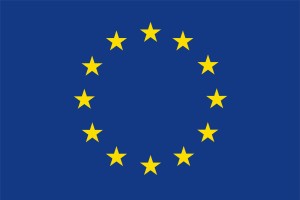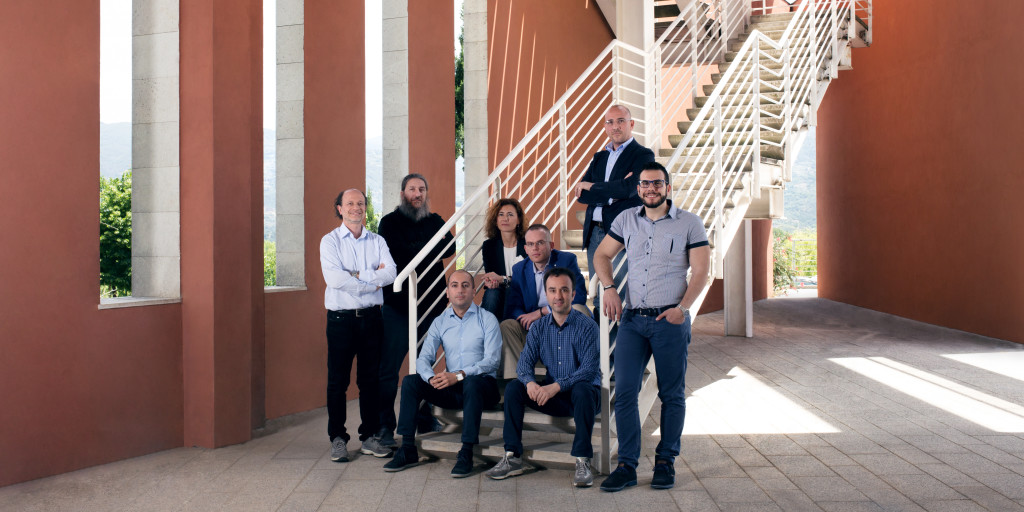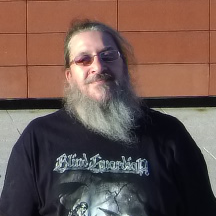EcoMultiCloud
Hierarchical approach for green workload management in heterogeneous and interconnected data centers
Project funded by Horizon 2020's SME Instrument
Click Here for more information
EcoMultiCloud
Hierarchical approach for green workload management in heterogeneous and interconnected data centers
Project funded by Horizon 2020's SME Instrument
Click Here for more information
EcoMultiCloud – Your datacenter, your cloud, your safety
- Product
- Project Overview
- Architecture
- Project Work Plan
- Consortium
- Project progress
- Scientific Overview
- Demo
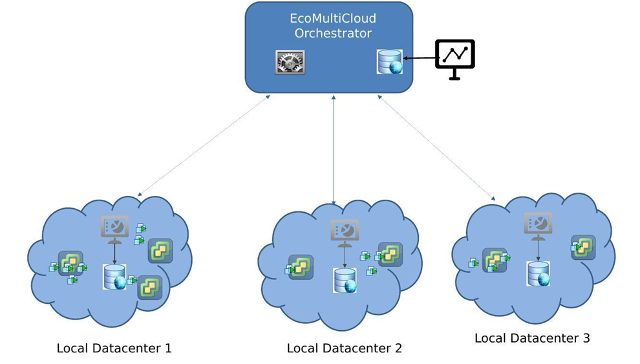
The main benefits of EcoMultiCloud are:
-
Cost savings: by efficiently redistributing the workload on different sites it is possible to reduce cost on Hardware, Cooling, Energy and Labor.
-
Energy savings: power consumption reduced up to 60%
-
Reduced of carbon footprint: reduction up to 60%, which helps to obtain Energy Savings Certificates
-
Resources optimization: hardware components are used only when needed.
-
Scalability – Thanks to its adaptive/self-organized distributed algorithm, the proposed solution is very efficient, and converges to the optimal state regardless of DC size in just a few hours.
-
Risk mitigation: EcoMultiCloud performs preemptive VM migrations in order to prevent overload of hardware resources.
- Real-Time adaptation: is the ability to react quickly to dynamic workloads, performing multiple parallels and asynchronous migrations
- Combination of multiple goals: the goals such as Energy Saving, Emission reduction and load balancing may be combined with different priority.
The explosion of digital content, big data, e-commerce, and Internet traffic is making Data Centers (DCs) one of thefastest-growing consumers of electricity in developedcountries: nowadays, DCs around the world consume 30 billion watts of power annually (~1,2% of worldwide electricity consumption1), equivalent to the annual output of 30 nuclear power plants producing a total of 200 million metric tons of carbon dioxide2. From these numbers we can understand why DCs are the fastest growing category of ICT emissions: their footprint in 2011 accounted for 0.16 GtCO2e or 17% of the total ICT emissions (see Figure 2). With an estimated growth rate of 7.1%, DCs footprint will reach0.29 GtCO2e in 20203. The 41% of the global amount of DCs are located in USA and the 36% in Europe 4.

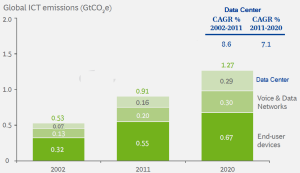
In 2013, American DCs consumed 91 TWh of electricity. This figure is projected to increase to American businesses $13 billion annually in electricity bil aemitting nearly100 millionmetric tons of carbon pollution per year5. In 2013, European DCs consumed 60 TWh ofelectricity. This figure will reach 104 TWh by 2020,costing European businesses €9,6 billionannually in electricity bill6 and emitting nearly 74million metric tons of carbon pollution per year. per year.
The efficient utilization of resources is therefore essential to reduce operational costs, energy consumption,carbon emissions and also to ensure that the Quality of Service (QoS) experienced by users is adequate and adherent to the Service Level Agreements (SLAs).
There are two clear business opportunities that allow to achieve the goal:
- Better efficiency in a single virtualized DC: by dynamically consolidating Virtual Machines (VMs) on the
minimum number of physical resources, the non-utilized servers can be set to hibernate, hence eliminating
their respective energy consumption leading to a reduction of carbon emissions and DC operational costs. - Better efficiency in a multi-site scenario: the dynamic allocation and migration of workload among
geographically distributed DCs leads additional savings by moving the workload where the energy is
cheaper/cleaner and/or the cooling costs are lower, according to what is called the “follow the moon” paradigm.
The adoption of interconnected DCs is rapidly increasing: multinational enterprises, financial institutions, telco operators and major cloud providers, are deploying distributed DCs to interconnect both proprietary andthird-parties heterogeneous DCs, in the so-called “Inter-Cloud” scenario.
Inter-DC VM migration is a more novel research topic, as virtualization infrastructures have not offered such features so far. However they will provide such feature in the near future: for example, the vSphere 6.0 release of VMware, launched in February 2015, includes new long-distance live migration capabilities, which will enable VM migrations across remote virtual switches and DCs. While opportunities opened by long distance migrations are huge, involved issues are also extremely complex: among them, we can mention the benefits-to-drawbacks convenience for the workload migrations, the selection of which site from/to migrate, the selection of which specific portion of the workload should be migrated, and the determination of the reassignment of the migrating workload into the target site.
Current approaches aim to solve the problem as a whole, in a centralized fashion, undergoing the risk of originating three main issues: (i) poor scalability, due to the large number of parameters and servers; (ii) poor ability to adapt to changing conditions, as massive migrations of VMs may be required to match a new workloaddistribution strategy; (iii) limitation to the autonomy of the sites, which are often required to share the same strategies and algorithms.
To efficiently address these potential problems, we believe that it is necessary to decentralize part of the intelligence and distribute the decisions points, while still exploiting the centralized architecture and functionalities offered by virtualization infrastructures in single DCs. This naturally leads to a hierarchical infrastructure, in which single DCs manage the local workload autonomously but communicate with each other to route and migrate VMs among them.11
The EcoMultiCloud hierarchical architecture is composed by two layers:
- the lower layer is used to allocate the workload within single DCs: each site adopts its own strategy to assign VMs internally, with local consolidation algorithms (possibly different from site to site). The lower layer collects information about the state of the local DC, andpasses it to the upper layer.
- the upper layer is able to exchange information among homogeneous and interconnected sites and drive thedistribution of VMs among the DCs : a set of algorithms – shared by all the sites – are used to evaluate thebehaviour of single sites and distribute the workload among them, both at the time when newapplications/VMs are assigned and workload migration from one site to another is deemed appropriate.
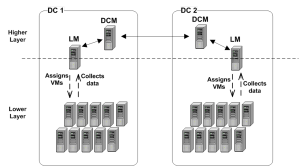
A key responsibility of the DCM (Data Center Manager) is to analyse detailed data about the local DC and summarize relevant information that is then transmitted to remote DCMs and used for the assignment and redistribution of workload. The nature of the high level information depends on the objectives that must be achieved.
EcoMultiCloud gives to DC administrators the opportunity to achieve the following technical and business goals (validated by HP’s Innovation Center, Cisco Lab and Telecom Italia Labs):
- Reduction of power consumption and carbon emissions (minimum 30% – maximum 60%)
The solution consolidates any number of VMs onto the minimum number of physical server hosts, hence delivering autonomic Host Thin Provisioning TM (registered as trademark by the SME Proponent Eco4cloud ) provisioning only the number of physical servers and cores the applications need, rather than the number provisioned. Host Thin Provisioning TM works by switching on and off physical cores as workload varies in real-time. This way, the unoccupiedservers are set to hibernate, hence eliminating their energy consumption. It is important to underline that an idle server consumes more than 50% of the energy consumed when fully utilized. By maximizing the utilization of active servers in the interconnected DCs, CapEx as well as OpEx(in the form of energy savings) gets immediately reduced. Furthermore, by reducing the energy consumption, cooling and sizing gets reduced as well, contributing to indirect additional reductions of OpEx and CapEx, respectively. Our consolidationprocess have been proven in several deployments such asimg-009 Telecom Italia’s and Herning Kommune (Denmark), and validated by industry leaders such as VMware, Cisco Systems,Hewlett‐Packard and IBM. Results affirm that it help reducing power consumption and carbon emissions in the range 30% – 60% and achieving efficiency figures in excess of 90%. Companies are today strongly encouraged to reduce the amount of carbon. - Reduction of energy costs (depending on DCs location)
The cost of electricity is generally different from site to site and also varies with time, even on a hour-to-hour basis,therefore the overall cost may be reduced by shifting portions of the workload to more convenient sites. EcoMultiCloud can bidirectionally shift workloads between facilities depending on a variety of policy‐set criteria, such as to max out the utilization of available capacity, to take advantage of the price and/or availability of electricity at different sites, or dynamically price‐brokering multiple public‐cloud providers as workloads can also be shifted between sites at different times of the day or night (a process also known as “follow the moon”) based on related cost and/or convenience. - Quality of Service Management and load balancing among different sites
Organizations managing multiple DCs want to ensure workloads are proportionally balanced across sites in order to improve the responsiveness of specific sites and reduce the impact on physical infrastructure such as power and cooling systems. In fact the workload must be distributed without overloading any individual site. This may affect the Quality of the Service, which may still be improved by intelligently combining applications (i.e., VMs) having complementary characteristics (e.g., CPU‐bound with RAM‐bound applications). In an inter-site environment, EcoMultiCloud is able to properly balance the load distributed across different sites, as a better balance may help improve the responsiveness of the individual sites, decrease the impact on physical infrastructure, and help prevent overload conditions affecting the QoS. - Compliance with Service Level Agreement
Thanks to the insights and real-time monitoring analytics of critical system parameters provided by EcoMultiCloud, DC Managers can proactively/predictively prevent SLA violations, mitigate risks and increase overall DC reliability positioning the enterprise with a strong Green/Environmental reputation. - Reduced Inter-DC Communications
EcoMultiCloud architecture will also be functional to intelligently determining which workloads should remain within a specific facility rather than being migrated to another site, as in fact not all workloads are equally portable, especially those associated with large data sets. So, in some cases it is more efficient to assign a VM to the local DC instead of moving it to a remote DC depending on many factors, among which the amount of data used by the VM, the available inter‐DC bandwidth and the type of applications hosted by the VMs. For example, choosing a local DC is more convenient if the VM hosts a database server as opposed to a web service just because of the intrinsic characteristics of the respective VMs. All the above mentioned goals are important, yet different DCs may focus on different aspects, depending on the specific operating conditions and on the priorities prescribed by the management, and EcoMultiCloud enables the intelligent combination of choice delivering efficiency and flexibility combined. In fact, the efficiencies and optimizations which EcoMultiCloud introduces to an inter-site environment deliver value on multiple fronts, effectively being based on a novel and distinct degree of additional architectural intelligence by which inter-cloud implementations can operate. These functional values are further enriched by the inherent and differentiating attributes of the utilized algorithms, i.e.: unlimited scalability, technology platform independence, real‐time adaptation, unified management.
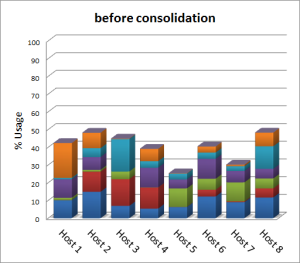
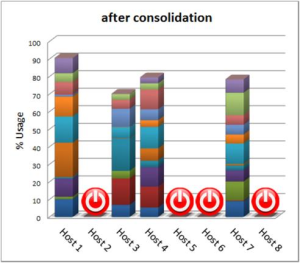
In order to ensure that goals of project are reached, we have carefully analysed the scope and duration of all tasks, as well as their interdependency, developing an adjusted work plan that allows us to optimize time without compromising technical excellence. Special attention has been put on those features identified as critical or having a higher risk either from a technical or from a commercialization point of view. During the first stage of the project (7 months, WP1) the focus will be on the definition of technical requirements and constraints related to the dynamic workload distribution and inter-DCs migrations on which will be performed a basic re-design of the overall hierarchical EcoMultiCloud architecture. The output will be a set of metrics and procedures to assess the capabilities of the devised solution, linked to the business/technical requirements.
In WP2, all data acquired in WP1 will be processed to define and implement LM and DCM modules together with their LM/DCM communication protocol, with the aim to produce a preliminary assessment of the different policies for workload consolidation. Finally, we will proceed with SW integration and related tests.
In WP3, after the definition of a multi-DC environment matching the constraints defined in WP1, data coming from the selected environment will be collected and processed to build a use-case scenario and assess a model for the simulation. During the simulation phase, the impact of the real execution of the EcoMultiCloud algorithms will be analysed and the outcomes will be shared with both the DCs administrators and managers. After a focused tuning and algorithms optimization, the EcoMultiCloud alpha version will be released .
In WP4, the pilot test will be executed: the EcoMultiCloud alpha version will run on Telecom Italia DCs. The output of WP4 will the release of EcoMultiCloud final (beta) version. In parallel way, a Business Innovation Plan incorporating a detailed commercialisation strategy (dissemination, exploitation and IPRs management) and a financing plan in view of market launch, will be periodically revised within WP5.
Finally, WP6 has been devoted o:
- monitor project progresses and use of the resources allocated;
- establish an efficient decision making procedure with the aim to identify potential deviations or anticipate
risks, and therefore to define the proper corrective action;
Eco4Cloud coordinated and directly carry out or supervise all tasks within the project, both technical and business development activities. Only in specific tasks in which we lack the necessary resources to ensure the best results, we will seek the assistance of subcontractors for expert support.
EcoMultiCloud Team
Carlo Mastroianni 
Project Manager
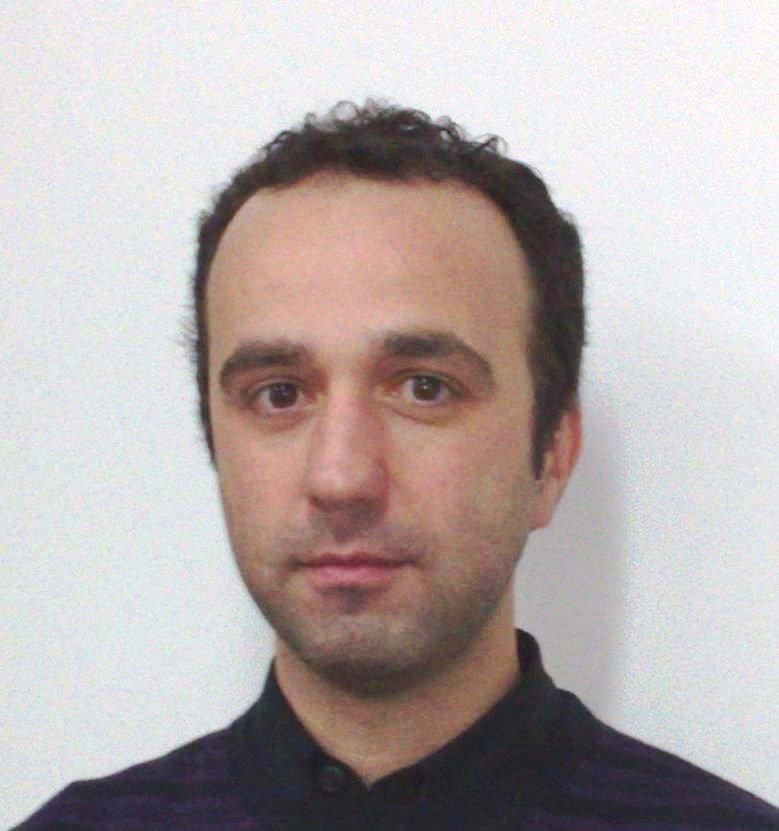 Computer Engineer, Researcher at the Institute of High Performance Computing and Networking of the Italian National Research Council, ICAR-CNR, Cosenza, Italy. Previously, he worked at the Computer Department of the Italian Prime Minister Office. Internationally renowned research activity on Cloud and Grid computing, nature-inspired algorithms, multi-agent systems. Articles on some of the most prestigious journals, e.g. IEEE/ACM Transactions on Networking, IEEE Transactions on Evolutionary Computation, ACM Transactions on Autonomous and Adaptive Systems. Best Paper Awards at European Grid Conference 2005 and CCGrid 2009 (Symposium on Cluster, Cloud and Grid Computing).
Computer Engineer, Researcher at the Institute of High Performance Computing and Networking of the Italian National Research Council, ICAR-CNR, Cosenza, Italy. Previously, he worked at the Computer Department of the Italian Prime Minister Office. Internationally renowned research activity on Cloud and Grid computing, nature-inspired algorithms, multi-agent systems. Articles on some of the most prestigious journals, e.g. IEEE/ACM Transactions on Networking, IEEE Transactions on Evolutionary Computation, ACM Transactions on Autonomous and Adaptive Systems. Best Paper Awards at European Grid Conference 2005 and CCGrid 2009 (Symposium on Cluster, Cloud and Grid Computing).
Agostino Forestiero 
Co-founder and Chief Architect
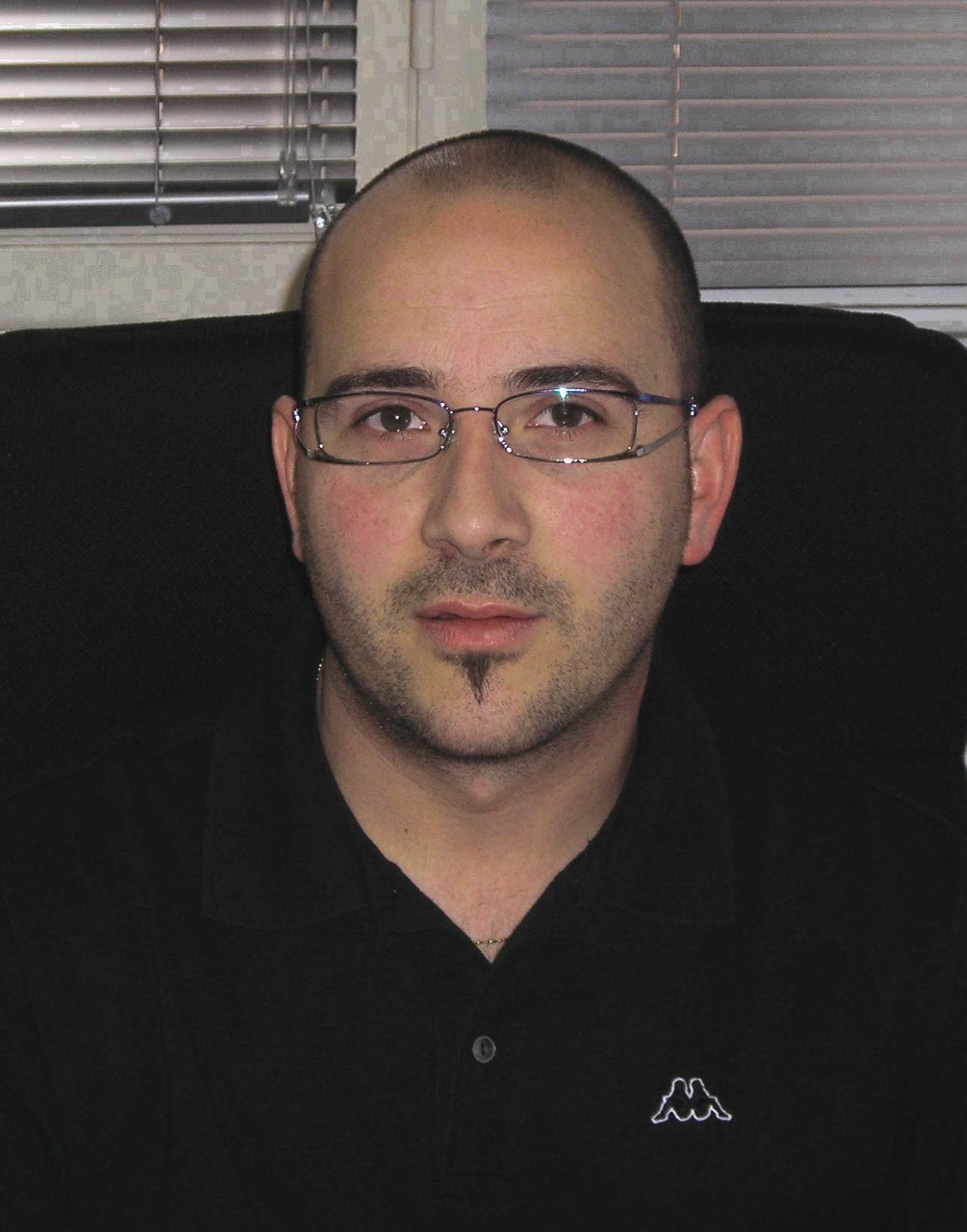 Computer Engineer and PhD in Computer Science. Researcher at the Institute of High Performance Computing and Networking of the National Research Council of Italy. He coauthored over 50 scientific papers published in international journals and conference proceedings.
Computer Engineer and PhD in Computer Science. Researcher at the Institute of High Performance Computing and Networking of the National Research Council of Italy. He coauthored over 50 scientific papers published in international journals and conference proceedings.
Best Paper Award at Cluster, Cloud and Grid Computing Conference 2009 (Shanghai). His research interests include cloud and green computing, P2P networks, cyber security, and swarm intelligence.
Raffaele Giordanelli 
Cofounder, CEO and CTO
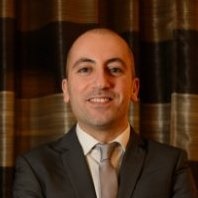 Raffaele Giordanelli was one of the Eco4Cloud’s founders and he managed the first growth of the company, working in particular on prototyping business solutions, raising capitals (DPixel, Principia II and Tim Ventures invested in Eco4Cloud) and securing important clients.
Raffaele Giordanelli was one of the Eco4Cloud’s founders and he managed the first growth of the company, working in particular on prototyping business solutions, raising capitals (DPixel, Principia II and Tim Ventures invested in Eco4Cloud) and securing important clients.
Previously Researcher at the Institute of High Performance Computing and Networking of the Italian National Research Council (ICAR-CNR). His research interests include grid and cloud computing, P2P networks and bio-inspired computing. After his first publications, he grew passionate about startups, and he is well-known into the italian startup community.
Ivana Pellegrino 
Co-founder and CFO
 Graduated in Economics, Entrepreneur, Business Consultant and Advisor.
Graduated in Economics, Entrepreneur, Business Consultant and Advisor.
Broad experience in IT Projects, especially ERP solutions. She holds the ISIPM Certification from the Italian Institute of Project Management.
Ivana covers the full spectrum of corporate governance and corporate finance, and specializes in granting public funds for Italian and international projects, and in administration and financial accounting.
Demetrio Laganà 
Head of Product and Technical Architect
Graduated in computer science engineering in 2013, he followed a professional master’s program – Expert in Design and Development of Services and Open Source Software in the context of Smart Cities – DIMES, University of Calabria, achieving the title of: “Industrial researcher expert in the design and implementation of innovative software solutions for the integration and management of data processes and services.”
He starts working in Eco4Cloud Srl at the end of 2013 as backend developer, now is responsible of the design of the product. He has improved the knowledge of virtualization technologies such as VMWare / AWS and leads the dev team applying agile methodologies (i.e. Kanban). Expert in software modelling, architecture and DB design, and Java programming.
Giovanni Lupi 
Senior System Administrator
Computer Engineer and Master in Telematica ed Applicazioni Multimediali at Politecnico of Turin. From 1997 to 1999 he worked at Pitagora spa as junior system administrator. From 19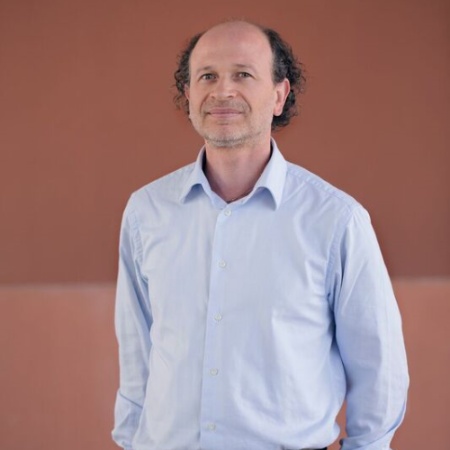 99 to 2012 he worked at CM Sistemi sud as Senior System administrator managing big IT infrastructures such as Carime Bank, Calabria Region, Ministry of Justice. Virtual Technologies specialist (vmware, Azure, openstack). Since 2012 he has been working at Eco4cloud srl as Senior System administrator, technical support responsible and he is specializing in cloud technologies such as AWS.
99 to 2012 he worked at CM Sistemi sud as Senior System administrator managing big IT infrastructures such as Carime Bank, Calabria Region, Ministry of Justice. Virtual Technologies specialist (vmware, Azure, openstack). Since 2012 he has been working at Eco4cloud srl as Senior System administrator, technical support responsible and he is specializing in cloud technologies such as AWS.
Carmine De Napoli 
Senior Developer
Computer Engineer. From 2003 to 2004 he worked at Thematica SRL as Software Developer and DBA. From 2004 to 2012 he worked at Methodi SRL as a Senior Software Developer and Team Leader, managing projects for the Ministry of Infrastructures, the Italian Register of dams and for the management of the logistics of Gioia Tauro port.
Since 2012 has been working at Eco4cloud SRL as senior developer. Expert in Java/PHP, DB modelling, frontend technologies such as JQuery/Ajax, and MVC framework Spring.
Leonardo Spataro
Senior Developer
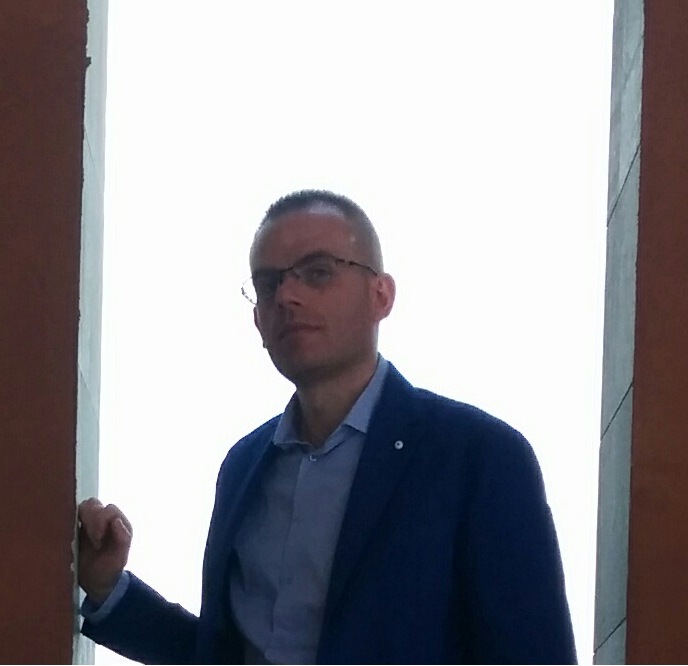 Graduated in computer science engineering in 2010, previously he worked in Aubay SpA at BNL-BNP Paribas group as software designer and developer, using UML and Rational Software Modeler, Java/J2EE, Javascript, XML and HP Autonomy and at ABI Lab involved in development part, planning and tasks estimation, functional and technical analysis, using Java 5, Spring, Struts 1, Liferay 6.1, HTML 5, Javascript (jQuery, AlloyUI), MySQL 5.
Graduated in computer science engineering in 2010, previously he worked in Aubay SpA at BNL-BNP Paribas group as software designer and developer, using UML and Rational Software Modeler, Java/J2EE, Javascript, XML and HP Autonomy and at ABI Lab involved in development part, planning and tasks estimation, functional and technical analysis, using Java 5, Spring, Struts 1, Liferay 6.1, HTML 5, Javascript (jQuery, AlloyUI), MySQL 5.
Since 2014 he has been working at Eco4cloud SRL as senior developer, now is responsible for quality control. His research interests include multi-agent systems and swarm intelligence.
SUB-CONTRACTOR INVOLVED IN THE PROJECT
-
LABOR Industrial Research Lab
LABOR is a private industrial research and engineering laboratory providing engineering, consulting and technology development specifically targeted at SMEs operating in the EU, in order to boost their growth at a European level through technological innovation. The Engineering and Development team consists of electronic and mechanical engineers, computer scientists, laboratory technicians and industrial chemists. The qualified staff of the company is supported by a network of technology partners and centers of excellence at European level. Labor has been certified ISO 9001 since August 2002 and operates in the Technological Park called Tecnopolo Tiburtino in Rome (Italy). Apart from third party engineering, Labor develops its own technological platforms, for selling or licensing purposes.
The infrastructures include:
- a laboratory for electronics and automation;
- an area for innovative prototypes fabrication, development , engineering and testing;
- a laboratory specialised in industrial chemistry.
In the ICT area, Labor is able to take care of the full development cycle starting from gathering and analyzing requirements, designing, developing and testing software products. This expertise, coupled with proven simulation and data analysis competencies, may cover an essential role in helping the Eco4Cloud team to follow customer oriented and technical effective guidelines during the developing phase.

Relevant expertise that will contribute to EcoMultiCloud project
Key personnel involved
Francesco Costa – A results-driven, customer-focused, articulate and analytical Senior Software Engineer who can think “out of the box”. Very large experience in design and integration problem solving skills. Expert inC/C++,Java, C#, .NET, PHP, and SQL with database analysis and design, applied to Win32/64, Linux32/64, ARM v7, Cortex-M3/4, PIC18/24/32. Skilled in developing requirements specifications, user documentation, architectural systems and artificial intelligence research. He works in Labor since 2010. He has worked in several multidisciplinary projects taking care of different ICT related aspects. Recently he designed the DSS Engine of VINTAGE “A user friendly Decision Support System for an integrated vineyard management, for addressing quality and quantity production variability optimising the use of resources” FP7-GA-286608. Some of the published work was about new challenges in integrating and extending DSS and Data Mining advanced techniques to spatial data of Geographic Information Systems: “GIS, mechanistic modelling and ontology: a performing mix for precision and sustainable viticulture.“ (B. Bois, A. Volta, A. Caffarra, F. Costa, M. Rega, G. Antolini, F. Tomei, S. Galizia, J. Nascimben, D. Crestini, F. Baret, M. Neri, C. Bertozzi, G. Lughi, M. Roffilli, L. Bottarelli, B. Bauer-Marschallinger, S. Hasenauer, S. Campagnolo, D. Delavalle, F. Brossaud, V. Grosso, V. Marletto – Proceedings of the 37th World Congress of Vine and Wine in Mendoza – Nov. 2014) and “INTEGRATION OF REMOTE SENSING IN A DECISION SUPPORT SYSTEM FOR VINEYARD MANAGEMENT” (F. Baret, B. Bauer-Marschallinger, S. Campagnolo, F. Costa, V. Marletto – ESA living planet symposyum – Nov. 2013)
The following figure shows the Gantt chart of EcoMultiCloud project. The project was started on 01/12/2015 and will end on 30/11/2017
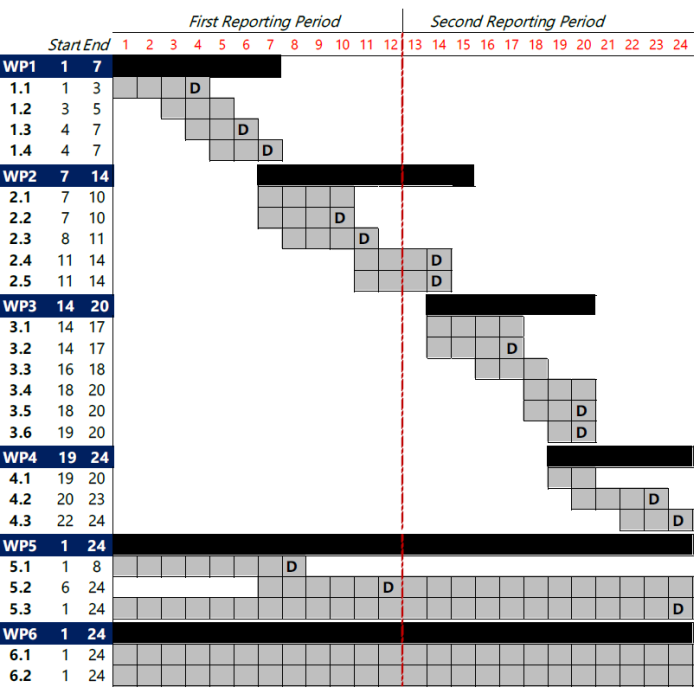
During the first stage of the project (WP1) the focus will be on the definition of technical requirements and constraints related to the dynamic workload distribution and inter-DCs migrations on which will be performed a basic re-design of the overall hierarchical EcoMultiCloud architecture. The output will be a set of metrics and procedures to assess the capabilities of the devised solution, linked to the business/technical requirements.
In WP2, all data acquired in WP1 will be processed to define and implement LM and DCM modules together with their LM/DCM communication protocol, with the aim to produce a preliminary assessment of the different policies for workload consolidation. Finally, we will proceed with SW integration and related tests.
In WP3, after the definition of a multi-DC environment matching the constraints defined in WP1, data coming from the selected environment will be collected and processed to build a use-case scenario and assess a model for the simulation. During the simulation phase, the impact of the real execution of the EcoMultiCloud algorithms will be analysed and the outcomes will be shared with both the DCs administrators and managers. After a focused tuning and algorithms optimization, the EcoMultiCloud alpha version will be released.
In WP4, the pilot test will be executed: the EcoMultiCloud alpha version will run on Telecom Italia DCs. The output of WP4 will the release of EcoMultiCloud final (beta) version.
In parallel way, a Business Innovation Plan incorporating a detailed commercialisation strategy (dissemination, exploitation and IPRs management) and a financing plan in view of market launch, will be periodically revised within WP5.
Finally, WP6 will be devoted to:
- monitor project progresses and use of the resources allocated;
- establish an efficient decision making procedure with the aim to identify potential deviations or anticipate risks, and therefore to define the proper corrective action;
- guarantee a prompt communication with the EC and other third parties linked to the project;
Work Package 1 – Solution requirements and architecture specifications
This WP has focused on the definition of technical requirements and constraints related to the dynamic management of the workload across a multi-data center architecture. In particular, it had the objective of completing the -design of the overall hierarchical EcoMultiCloud architecture and investigating the exploitation of inter-DCs migrations to efficiently manage the workload. The output of this WP was: (i) the detailed specification of a two-layer architecture of the EcoMultiCloud solution and (ii) the definition of a set of metrics and procedures to assess the capabilities of the devised solution, linked to the business/technical requirements.
This WP is divided into 4 tasks:
Deliverable produced for this wp:
| id | Due date | Actual delivery | Status |
|---|---|---|---|
| D1.1 | 31/03/2016 | 31/03/2016 | Complete and submitted |
| D1.2 | 31/05/2016 | 08/06/2016 | Complete and submitted. Slight delay experienced (PO was informed) |
| D1.3 | 31/05/2016 | 08/06/2016 | Complete and submitted. Slight delay experienced (PO was informed) |
Work Package 2 -Data Center Manager (DCM) and Local Manager (LM) Modules.
The main objective of this work package is to exploit the results of WP1 – specifically the design of the hierarchical architecture of the EcoMultiCloud solution and the definition of related requirements and metrics – in order to implement the main modules of the system.
Specifically, WP2 includes the definition of the LM (Local Manager) and DCM (Data Center Manager) modules, which are the main components of the lower and the upper layer of the solution. Furthermore, WP2 includes the specification and implementation of the communication protocols that are used to exchange data and information between the LM and the DCM, and therefore between the two layers.
The objectives mentioned so far have been achieved during the RP1 (M1 – M12) and they are illustrated in the Deliverables D2.1 and D2.2. During the RP2 (M13 – M24) the achieved objectives of this WP are: (i) production of a preliminary assessment of the different policies for workload consolidation and (ii) software integration and related tests. These objectives are related to tasks (T2.4 and T2.5) that started in RP1 and ended in RP2.
The WP is completed. Specifically, tasks T2.1, T2.2 and T2.3 are completed and they produced the Deliverables D2.1 and D2.2. Such tasks focused on the implementation of the main modules of the upper and lower layer and on the communication protocols adopted to exchange data among such modules. Tasks T2.4 and T2.5 started in RP1 and ended in RP2: the related results are reported in the Deliverables D2.3 and D2.4, regarding the software integration and the preliminary analysis of the different policies for workload management and redistribution.
This WP is divided into 5 tasks:
| id | Title | Status | |
|---|---|---|---|
| 2.1 | Implementation of the LM Data Model and Monitoring Features | Complete | Details |
| 2.2 | Implementation of the DCM Data Models and Alalysis Features | Complete | Details |
| 2.3 | Implementation of the LM and DCM Cominucaiuon protocols | Complete | Details |
| 2.4 | Preliminary Analysis of the Policies For Workload and Redistribution | Complete | Details |
| 2.5 | Software Integration and Testing | Complete | Details |
Deliverable produced for this wp:
| id | Due date | Actual delivery | Status |
|---|---|---|---|
| D2.1 | 30/09/2016 | 28/09/2016 | Complete and submitted |
| D2.2 | 31/10/2016 | 26/10/2016 | Complete and submitted |
| D2.3 | 31/01/2017 | 01/03/2017 | Complete and submitted (postponed to end February, PO was informed) |
| D2.4 | 31/01/2017 | 30/01/2017 | Complete and submitted |
Work Package 3 - EcoMultiCloud infrastructure
The main objective of this work package are:
- Definition of a run-time environment matching the constraints defined in WP1;
- Monitor, collect and analysis of data on DC operation;
- Configuration of the scenario and production of technical and business results through simulations;
- Production of reports regarding technical performance and tuning of parameters with system administration;
- Production of reports regarding business performance and selection of the scenario optimizing the selected business goals;
- Customization of the “alpha” version of the SW and setting of security/firewall rules.
The WP was completed only a few days after the scheduled deadline, i.e., M20 of the project.
This WP is divided into 5 tasks:
| id | Title | Status | |
|---|---|---|---|
| 3.1 | Run Time Environment | Complete | Details |
| 3.2 | Data Analysis | Complete | Details |
| 3.3 | Simulation and Scenario Assessment | Complete | Details |
| 3.4 | End-to-end monitoring and tuning | Complete | Details |
| 3.5 | Service Level Agreement (SLA) Management | Complete | Details |
| 3.6 | Integration and security /reliability features | Complete | Details |
Deliverable produced for this wp:
| id | Due date | Actual delivery | Status |
|---|---|---|---|
| D3.1 | 30/04/2017 | 05/05/2017 | Complete and submitted |
| D3.2 | 31/07/2017 | 04/08/2017 | Complete and submitted |
| D3.3 | 31/07/2017 | 01/08/2017 | Complete and submitted |
Work Package 4 - Piloting and Validation
The main objective of this work package are:
- Run the EcoMultiCloud alpha version in the real-case scenario;
- Schedule of the piloting activities and refinement of system parameters;
- Execution of the pilot in 2 phases: inter-DC migrations disabled and enabled;
- Validation and assessment of pilot results and release of the EcoMultiCloud “beta” version.
The WP was completed in time, i.e., M24 of the project.
This WP is divided into 3 tasks:
Deliverable produced for this wp:
| id | Due date | Actual delivery | Status |
|---|---|---|---|
| D4.1 | 31/10/2017 | 06/11/2017 | Complete and submitted |
| D3.2 | 30/11/2017 | 28/11/2017 | Complete and submitted |
Work Package 5 -Commercialisation and communication
The main objective of this work package is to exploit the products of other WPs in order to give financial sustainability to the project and generate revenues after the generally availability of the products developed.
Specifically, this WP already generated the result of finding the target market for EcoMultiCloud, segmented by verticals and geographies and consisting of Large Enterprises in the verticals of Telecommunications, Finance and Cloud Providers, in United States and United Kingdom. This niche market consists of 650 Large Enterprises, and could be broadened in a later stage. The market has been continuously monitored and new commercialisation opportunities have been included during the project and described in D5.2, mainly the availability of an additional use case for EcoMultiCloud, without massive intervention on the project from a technical point of view, the Hybrid Cloud.
This WP is divided into 3 tasks:
Deliverable produced for this wp:
| id | Due date | Actual delivery | Status |
|---|---|---|---|
| D5.1 | 31/07/2016 | 28/07/2016 | Complete and submitted |
| D5.2 | 30/11/2016 | 30/11/2016 | Complete and submitted |
| D5.3 | 30/11/2017 | 30/11/2017 | Complete and submitted |
Work Package 6 -Project Management
The following objectives have been defined for the coordination activity planned for EcoMultiCloud project:
- To review and assess the technical excellence of all work carried out and ensure that the deadlines defined are accomplished, while optimising internal resources within the project;
- To monitor timing and excellence of all subcontracted tasks, as well as coordinate the subcontractors’ work;
- Manage IP knowledge and ensure that aspects of the EC requirements of communication/reporting are met.
This WP is divided into 2 tasks:
No deliverable/milestone is foreseen under this WP.
Publications
Scientific papers and technical reports, listed below, were published during EcoMultiCloud project. They cope with different and important aspects of the workload distribution among multi-site Data Centers. For each work, references are provided to the paper and/or the slides of the talk and/or the presented poster.
For more information please contact the Scientific Director of the company, Carlo Mastroianni.
A. Forestiero, C. Mastroianni, M. Meo, G. Papuzzo, M. Sheikhalishahi, “Hierarchical Approach for Efficient Workload Management in Geo-distributed Data Centers“. IEEE Transactions on Green Communications and Networking, vol. 1, n. 1, pp. 97-111, March 2017. URL: http://dx.doi.org/10.1109/TGCN.2016.2603586
A. Cuzzocrea, C. De Napoli, A. Forestiero, D. Laganà, G. Lupi, C. Mastroianni, L. Spataro, “Business Scenarios for Hierarchical Workload Management in Data Centers“. Second International Conference on Internet of Things, Data and Cloud Computing (ICC 2017), 22 March 2017. ISBN: 978-1-4503-4774-7


